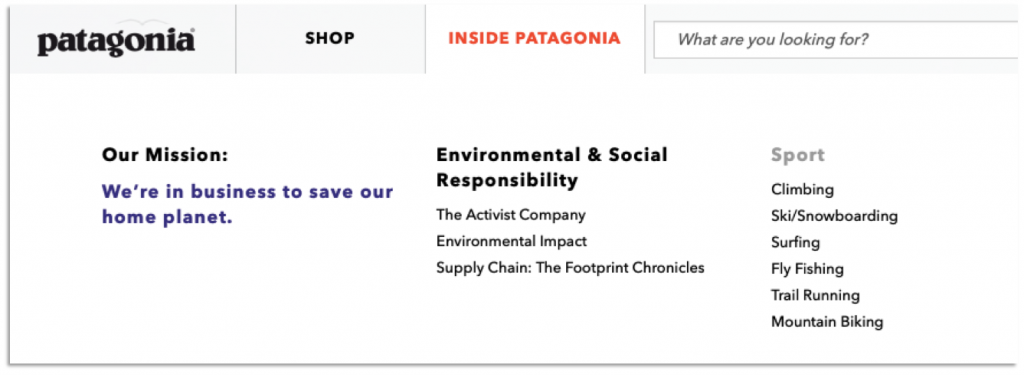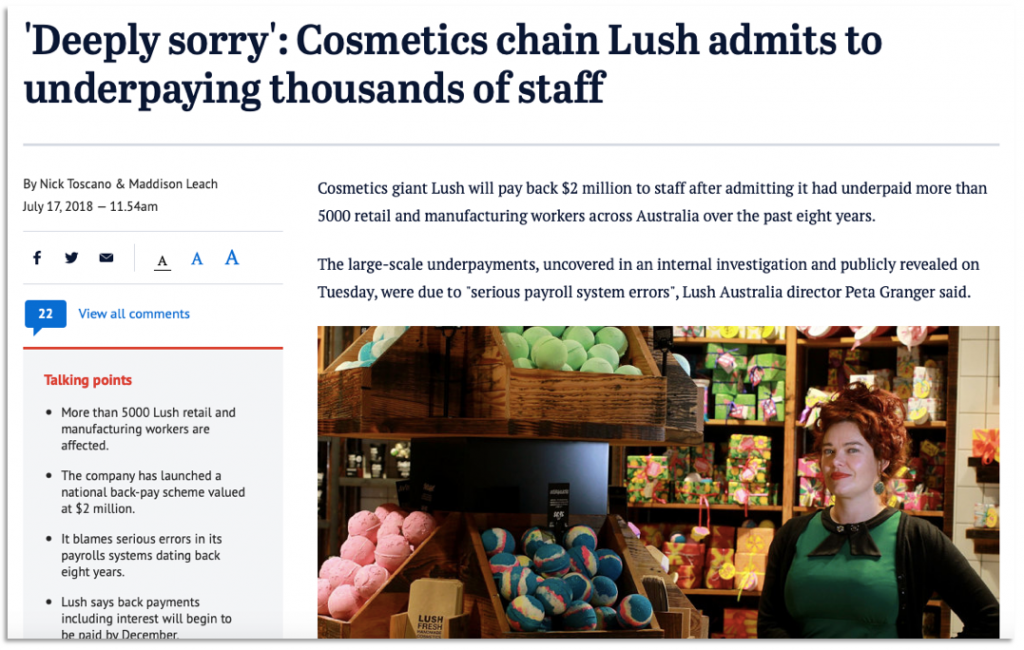
The notion of a brand having a purpose is relatively new. But what exactly is brand purpose, and what could it do for your organisation?
2.0 Why is brand purpose important?
3.0 Is brand purpose about morals?
4.0 Brand purpose v. positioning
5.0 Brand purpose and employees
1.0 What is brand purpose?
We live in a world where consumers are increasingly cynical about corporations and institutions – and where whole generations are questioning the rat race and their position within it.
So it makes sense that as we edge towards another new decade, all sorts of organisations see value in showing the world what they stand for – what their purpose, beyond selling pensions or insurance policies, lambswool sweaters or bottles of gin, really is.
It’s no real surprise then, that “brand purpose” has become a favourite new(ish) phrase in the whole brand lexicon. But is it really anything new? And whether it is or it isn’t, how can you make it work for your organisation?
2.0 Why is brand purpose important?
Imagine a situation where your teams all get into work every morning, keen to get to it because there’s more to their role than simply clocking on, clocking off and taking a pay cheque. Where customers look out for your news and are keen to be part of your story, because they don’t just like your products – they like what you’re all about.
It’s an ideal – but an achievable one. Businesses that are just starting out can prioritise their purpose, right from the word go. And businesses that are already well-established can drive growth by articulating what they stand for and aligning their activities around it.
Thinking about “purpose” can become a tangled process though, especially when it’s viewed as “moral purpose”.
3.0 Is brand purpose about morals?

3.1 Taking the higher ground
There’s an idea that an organisation’s “purpose” has to constitute a moral ideal… that somehow each organisation, be it a teeny start-up or an international corporation, exists to make the world a better place.
And of course, there are some truly visionary organisations that have environmental or societal benefit built into their DNA. Patagonia, for example, was set up specifically to have environmental and social impact through selling high-quality gear to people who spend a lot of time in nature and who are serious about outdoor pursuits. Finisterre is another company with similar values and a similar purpose.
But the vast majority of companies weren’t set up for the greater good. They were set up for lots of other reasons – like making money, employing people, providing environments that allow people to work in different ways and making different types of products and technologies available. Or sometimes they were setup for the greater good – like the Friendly Societies of 19thCentury Britain – but then over the course of time they got shareholders and had to make sure that making money featured high on their list of priorities. Of course, these organisations can have a positive impact – and they can do their best to work in ways that are decent and fair. But fundamentally, they don’t exist to save the oceans, plant trees or relieve poverty.
And the larger organisations become, the harder it is to take the moral high ground. So a retailer that has impeccable supply chain management, sustainable investment practices and innovative, environmentally-friendly approaches might still be selling food in plastic wrap, making people feel they have to buy more fast fashion items than they really need and providing huge car parks for their teams rather than encouraging public transport. And a pensions company might really look after its customers and teams, and at the same time invest – directly or indirectly – in tobacco or the arms trade.
3.2 Brand purpose gone wrong
Aiming to claim the moral high ground is – for the majority of brands – just setting yourself up for a fall. Even the Church of England didn’t live up to its own values and ideals.

In the excitement to create a brand purpose and to become a purpose-driven organisation, there can be a temptation to identify an overarching morally-sound cause… and then try to reverse your juggernaut of an organisation into it.
This is where brand purpose becomes a millstone around a brand’s neck, rather than a driving force that customers and teams alike can get behind. It’s when brand purpose begins to feel fake and you experience the horrors of brand purpose backlash.
Because if you even intimate that your “purpose” is about saving marine life or alleviating poverty – and you then take a single step that doesn’t support the environment or distribute wealth fairly – then everything you’ve ever said just looks like a lie. Instead of your purpose driving your brand, it just looks like a hollow gimmick.

The way to avoid this – for the majority of organisations out there – is to stop thinking about “purpose” in such a directly moralistic way. This doesn’t, of course, mean that brand should be amoral. But only the Patagonias of the world can consistently live up to saintly values.
4.0 Brand purpose v. positioning
If you take the imperative for absolute morality out of brand purpose, what you end up with is good old brand positioning. Which isn’t about – as one brand purpose award puts it – “a reason for a brand to exist beyond making profit”. Instead, it’s more about, “what is a good, solid promise we can make to our customers and our teams, that will spark imaginations and get everyone behind us?”

I always think of brand positioning as a triangulation. You have to think about what your customers want and need. You have to think about your company’s business goals. And you have to be aware of what your competitors are saying about themselves. Ultimately, you should reach a positioning that resonates with your customers (delights them, in fact), that makes your offer stand out from the competition – and that drives efforts to achieve your company’s business goals.
Brand purpose and positioning – and brand purpose and promise – are, in my book, pretty much the same thing.
Let’s imagine you’re setting up a new mattress brand called Snuggli.
If you decide you need a higher – moral – purpose (either because this aligns with your personal ethics, or because you know this matters very much to your customers), then you could decide to construct your mattresses with ethically-sourced materials, and build them to last. Your positioning could be “sleep well at night”. Which has a nice double meaning of the mattress giving you a) a good night’s sleep, and b) a clear conscience.
“Sleep well at night” could then lead you to a set of values or ways of working that make sure every aspect of Snuggli is ethical and environmentally friendly. Alternatively, you could decide that it’s way too difficult to guarantee ethical sourcing… and that even if you could, it would make the mattresses prohibitively expensive for your target audiences. So your positioning could be something like: “Sleep for life”.
This position would put customer wellbeing at the heart of everything you do. You need a good night’s sleep to be your best – and your company is going to do everything in its power to make sure its customers get the best sleep. This could lead to a set of values that are about understanding sleep, educating about sleep and engineering for sleep.
Both positions work. Both have the ability to create interest, attract customers and generate loyalty. Both could be the foundation of a brand purpose business model. But they’re not interchangeable. They each describe a very different company.
Whichever positioning you choose, you have to be able to live up to it. The ethical company might be forgiven for having squeaky mattresses. The best-sleep-ever company would not.
4.1 Brand purpose and customer relationships
There’s a line of thought kicking around at the moment that consumers – particularly millennials – are only interested in brands that are aligned to a higher moral purpose.
It is probably true that consumers do like to know that a brand is doing its best not to pollute or mistreat people. But they’re also very concerned about the personal benefits they gain from a brand and their interactions with it.
What customers want from brands is consistency and promises kept. And I really don’t think it matters whether your promise is a good night’s sleep or gold-standard environmental practices.
Whether you decide to call it positioning or purpose, you just need to consistently deliver on it.
5.0 Brand purpose and employees

Where brand purpose – or positioning – really comes into its own is in galvanizing teams behind an ethos.
If everyone at the mattress company knows that their reason for getting out of bed every weekday morning is to give people better lives because they’ve had a better sleep, you have a recipe for a purpose-driven culture.
Teams who work for this purpose automatically put their customers first. They question whether some of their processes are really contributing to the purpose. And they have more of a sense of all teams being in it together.
This kind of purpose-driven brand culture has been linked to employee engagement and greater levels of productivity.
5.1 Brand purpose: Not just a nice-to-have
There are a number of reasons brands sometimes struggle to articulate a clear, single-minded purpose. Often, a business finds it difficult to hang their hat on one idea and instead tries to cover too many bases all in one go.
Other times, brand purpose – particularly when it’s considered as a way to cultivate and maintain corporate culture – is seen as too fluffy, impossible to measure and too difficult to implement.
But brand purpose or positioning can become a keystone for corporate culture. And with the availability of advanced data analytics (check out Qlearsite, for example), it is more than possible to measure and monitor cultural value in organisations.
5.2 Brand purpose for unpredicatable times
The galvanizing effect that brand purpose can have on internal teams is even more important in a business environment of constant change.
We no longer plan in five-year cycles. A market we confidently thought we’d be in at the beginning of the year no longer exists by the end of it. Or a new technology comes along and completely up-ends consumer expectations.
Keeping teams engaged and motivated in this atmosphere of constant change is challenging. Which is where brand purpose becomes so important. The Snuggli mattress company may have to change its engineering approach, its location – or even its product lines (to become a digital sleep tracker, rather than a mattress provider). But its purpose doesn’t change.“Sleep for life” is a consistent, unchangeable goal and promise – and whatever the brand sells, it’s a positioning that tells a distinct story to consumers and teams.
If you’d like to discuss brand purpose and brand positioning, please do get in touch. We’d love to hear your thoughts.
